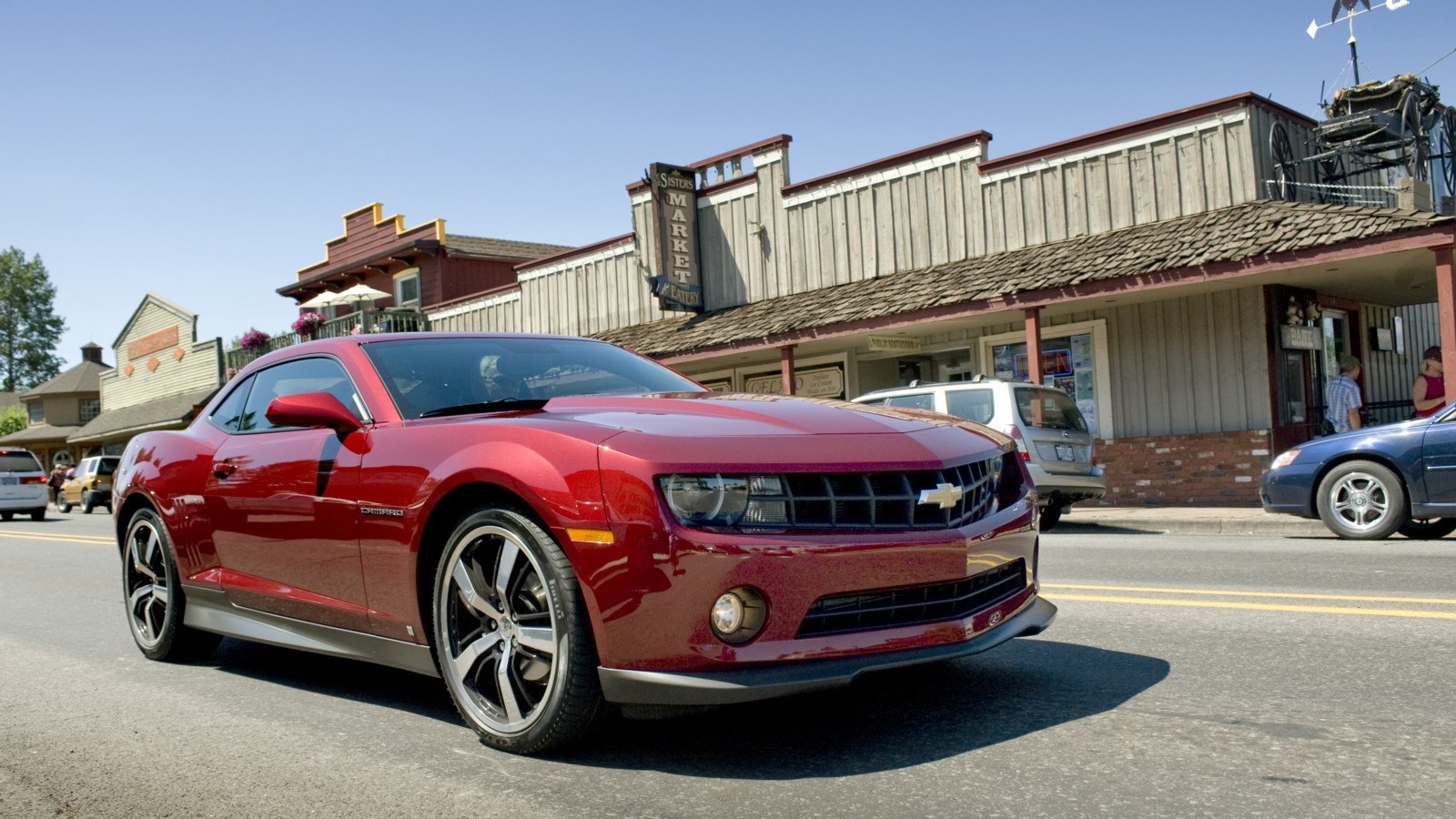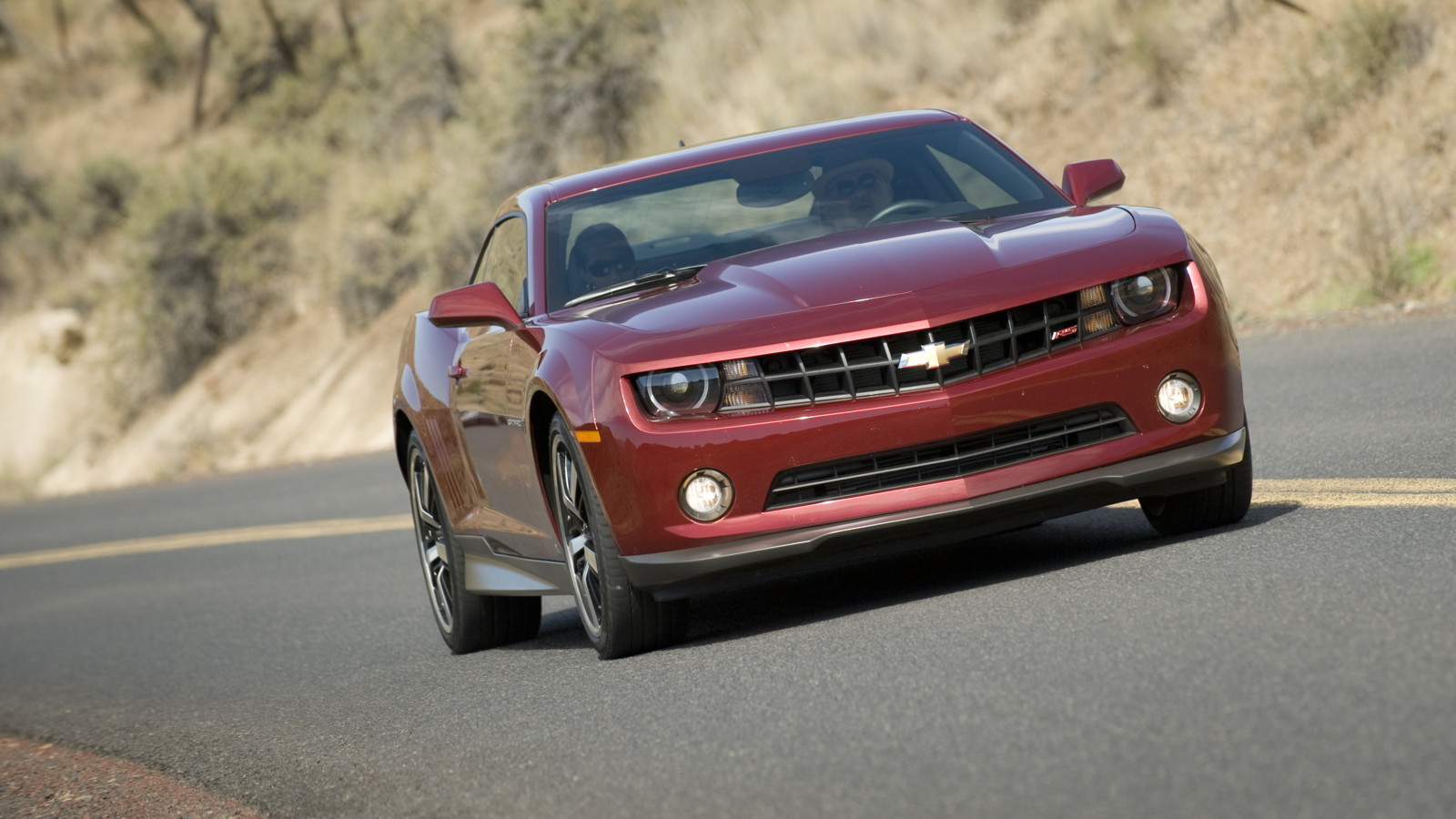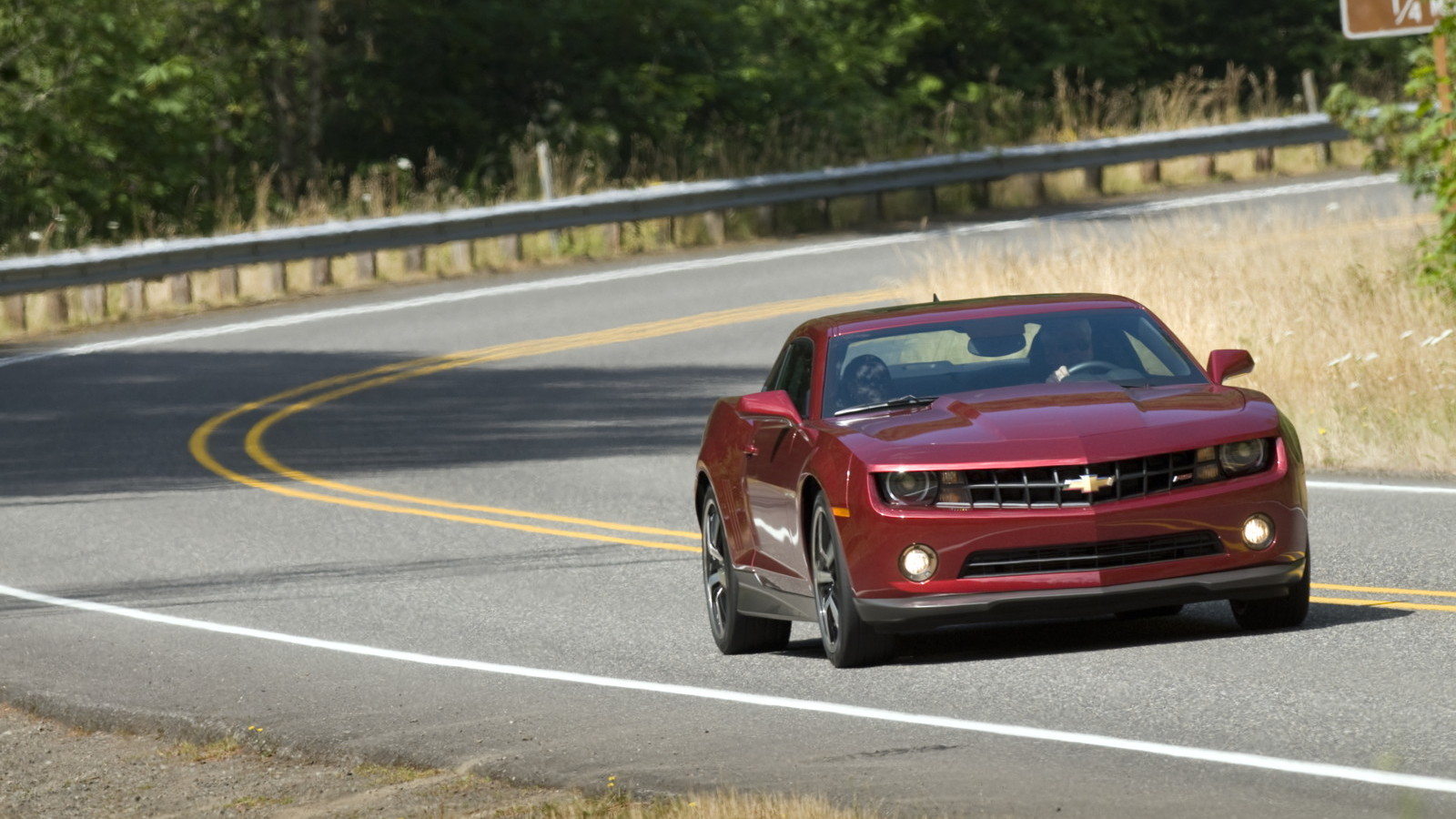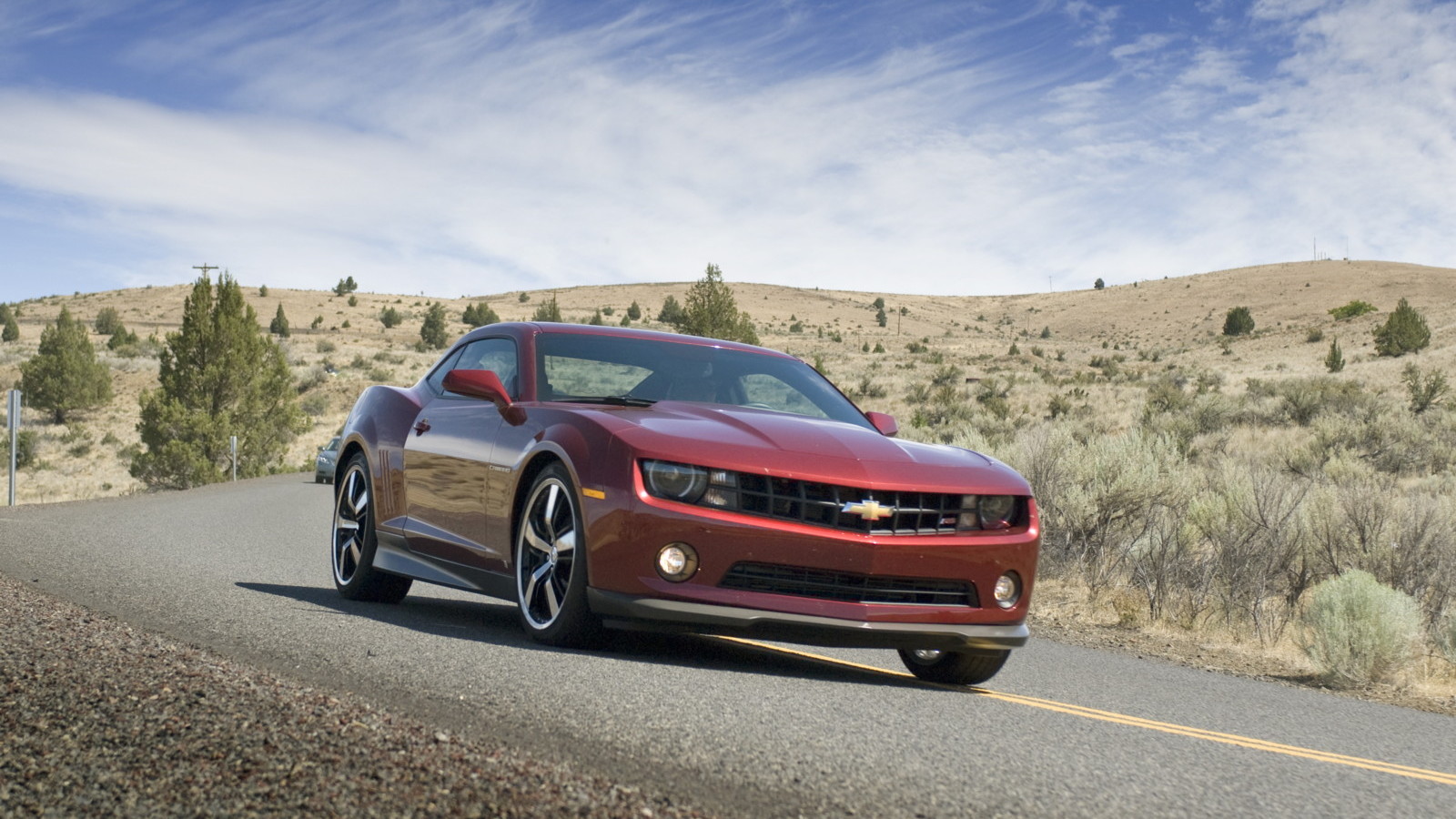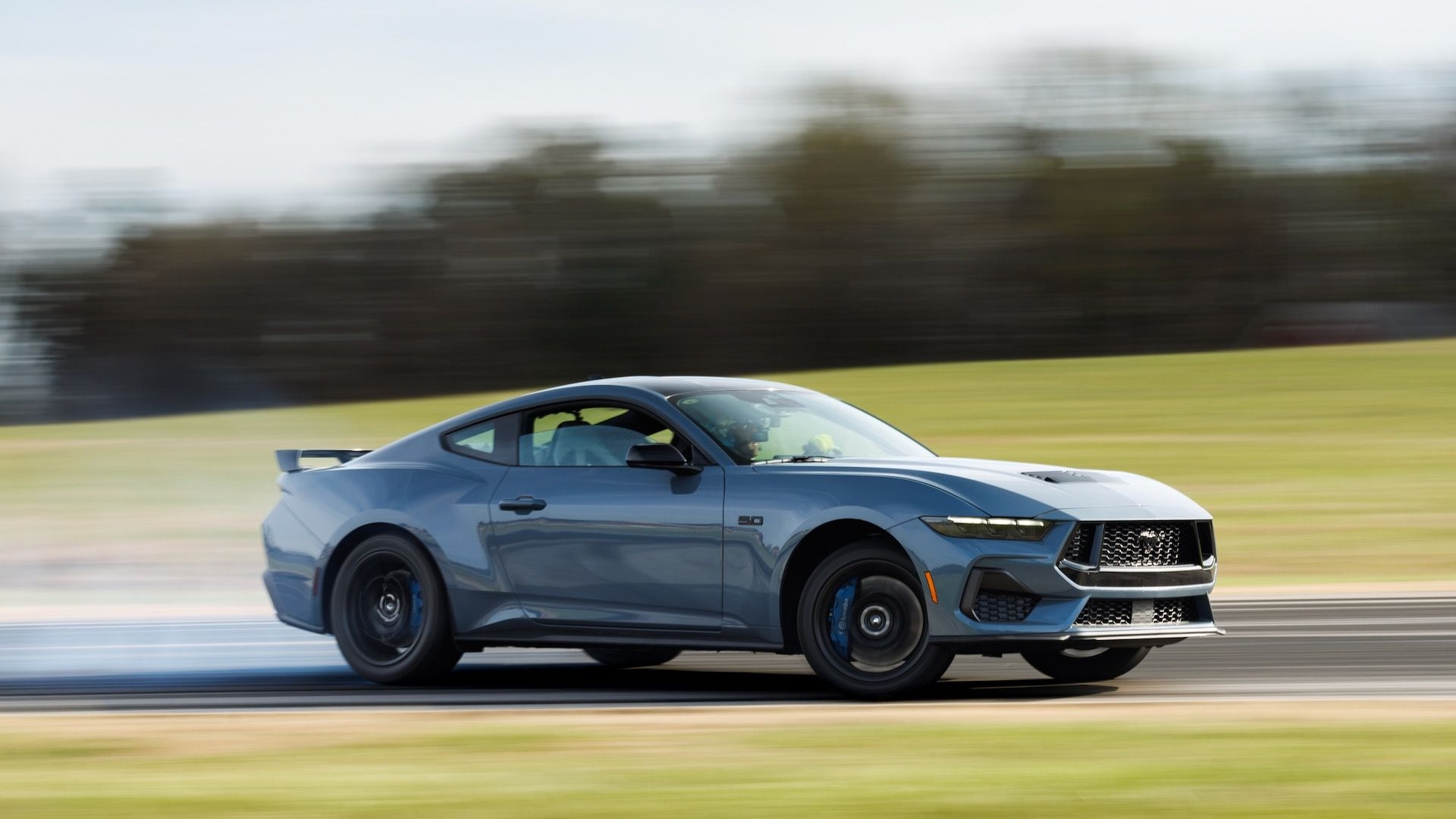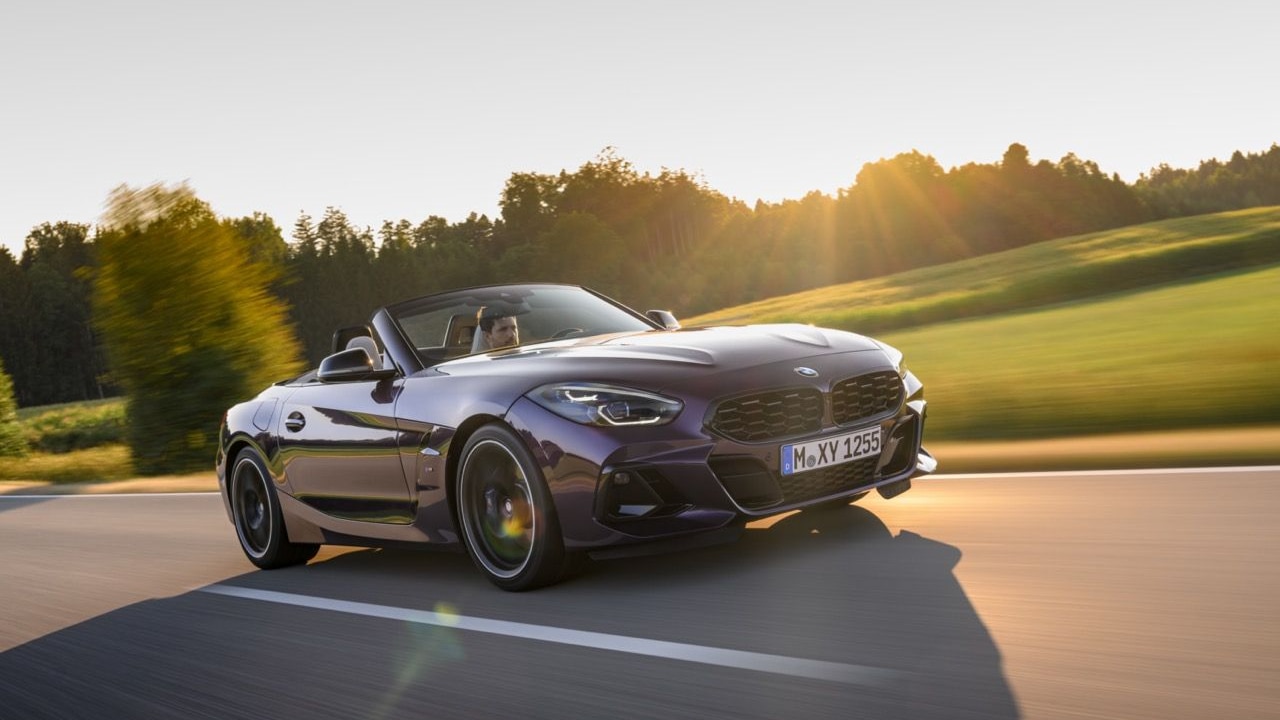Six-cylinder cars were once second-best in the eyes of most Americans. This is the land of the V-8, the Big Mac and the Big Gulp.
Thankfully, at long last, there is greater diversity in America, and I’m not talking about demographics or politics. I’m talking cylinders and a tuner culture devout in its devotion to inline-fours, not V-8s. Heck, there’s even a buzz forming around the debut of a tiny Ford econobox, the Fiesta.
And, yep, there are also legions of fans of the Hyundai Genesis Coupe, not to mention the Nissan 350/370Z, which are V-6, not V-8 cars that are affordable and just plain rip.
Into these waters dives…. A Camaro? Yep, and a Mustang. And while last year’s 'Stang 6er had to waddle around with its tail between its legs, making due with an anemic 4.0-liter V-6 good for a meek, 210hp—an engine donated from (cough, cough) the Explorer—the new six is going to kill it, with 305hp while still getting 30mpg on the highway.
The 2010 Camaro V-6, meanwhile, didn’t need to play parts-bin games. It was born with an excellent power plant, the 3.6-liter engine from the Cadillac CTS, which already had such goodies as variable valve timing and direct injection. All of which is to say that while V-6 pony cars might’ve been anemic back in the day, “Colts” rather than mature steeds (not to be confused with Mitsubishi/Dodge Colts, mind you), both the 2011 V-6 Mustang and this 2010 Camaro are genuine muscle cars, capable of competing with that aforementioned Nissan and Hyundai on performance as well as price.
Handling And Suspension
The 2010 Camaro 2LT benefits from a 4.5-link independent rear suspension and a strut-type front end. The front track is wide; 63.7 inches, vs. 62.3 inches on the V-6 Mustang. The effect of this wider track (and more supple rear suspension vs. the solid axle Mustang’s) is that the Camaro defaults to understeer at all times. You have to use the throttle to steer with the 19-inch rear tires, deliberately inducing oversteer, or the Chevy doesn’t want to drift. The Mustang by comparison, is a lot more neutral; it too, will push wide in a turn if you come in too hot, but setting up the Mustang for a drift is an easier, more natural affair. The wider turning circle of the Camaro (37.7 feet vs. 33.4 for the Mustang) also makes the Camaro seem bigger than it is (both cars have almost identical footprints), even if turn-in is quick, and if anything the steering feel is slightly over boosted, though not to a degree that you’ll miss an apex.
In all, the Camaro LT handles beautifully; it’s not upset by undulating pavement the way the Mustang can be, and is so planted and confidence inspiring that pushing the Chevy hard as hell or just commuting are joys in equal measure.
Muscle
The Camaro’s 3.6-liter V-6 and six-speed manual are well mated. While peak torque (273 pound-feet) arrives late, at 5,200rpm (redline is 6,700 rpm), there’s plenty of twist available well before that point, enough to smoke rubber in the first three gears, just in case you like burning up a set of P245/50R19 Pirelli P-Zero Neros.
This car is fast, too—capable, according to some publications, of getting to 60mph in under six seconds, a stat we don’t doubt based on our experience, and one which is impressive, because it shows that you’re not compromising much performance by getting the V-6 Camaro vs. a slightly faster 370Z. And don’t forget that the Z is a more expensive car, one that has no back seats and barely any cargo room.
Pragmatism
My Dad has a word for cars like the Camaro: he calls them the “third-car” option, sort of like the nuclear option, though this language is merely indicative of impending mid-life crisis, not the end of life as we know it.
So to some it may seem odd to even bother with the hum-drum notion of considering a Camaro a daily driver, even though demographically that’s what it is for the vast majority of its buyers (61,000 Camaros were sold last year, despite a miserable economy).
And in that vein, it’s impossible to ignore the Chevy’s shortcomings, the most pronounced of which have to do with poor outward visibility. Its chopped roofline makes seeing traffic lights overhead nearly impossible if you’re first to pull up to an intersection, and its huge C-pillar leaves drivers to cope with one heck of a large blind spot, exacerbated by not especially large sideview mirrors. Passing requires delicacy; parallel parking takes serious patience.
Even if these compromises don’t hinder your purchase, if you’re six-feet tall or taller the lower roofline makes for very little head clearance—the Mustang gives buyers another inch of bean space.
All that said, the Camaro is reasonably pragmatic for what it is. It has a trunk pass-through, and though not a particularly capacious one it’s large enough to make room for a set of golf bags. And though rear seats afford very little knee- and headroom, children would fit with little fuss.
Here's a bone I'll throw; Chevy endowed the Camaro with un—GM'd switches and dials for A/C and audio controls, allowed the use of retro fonts for the tach and speedo, and included a shovelful of sharp, squared off secondary gauges that reside at the base of the center stack. Now I'll take the bone right back, because GMthink pervades elsewhere. Exhibit A: Faux metallic inserts used on the dash and surrounding the shifter. Faux is fine when plastic stands in for metal (or wood); we've seen this work well in other cars. But designers have to be given free reign to play on texture or a technological theme. In the Camaro there's a dissonance between the retro gauges and the acres of harshly modern, somber, industrial gray plastic. Too bad, because Chevy got so much else right, especially with the Camaro's external beauty.
Which is better, the Mustang V-6 or the Camaro?
We’ll table this last question until we get our hands on a 2011 Mustang with its greatly improved motor. Meanwhile, a lot of buyers have already spoken; at least on the outside, the Camaro is one hell of a head turner and yet a pretty cheap date when it comes right down to it. Or, as my Dad might say, the third-car option is still cheaper than the second-wife option.
